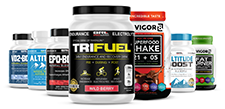4 Training Zones For Purposeful Running

Far too often people get caught in the trap of purposeless training. They go out each day and put in a run, but with no idea what the run is improving or why they’re doing it.
In order to train with a purpose, you must first understand the different zones of training and how they can lead to improvement.
Natural Zone
The easy zone or “natural zone” is the pace you fall into naturally when you go for an easy run. Running in this zone helps to build endurance and strengthen connective tissues and muscles associated with running but won’t help much with speed. Easy running is generally reserved for warm-ups, cool-downs and long runs.
Tempo Zone
Training in the threshold or "tempo zone" improves endurance and helps your body get used to running at or above race pace. Generally, runs in this zone last 20 and 30 minutes at about 75-90% intensity. Most people prefer to do tempo runs by feel, running at a pace that feels considerably more stressed than easy runs. If you can hold a conversion with little effort, you haven't entered the tempo zone; you should be able to speak only in short sentences.
Interval Zone
These runs usually entail short intervals of up to 6 minutes at or just below race pace, or 90-100% intensity. This training zone will simulate racing conditions and is ideal if you want to improve your time. Run at the pace you ran in a recent race for short intervals of no more than six minutes, then take a short break and do it again as many times as you wish. In the beginning you may want to just do a few intervals, but as you gain experience you can extend the workout up to 20 or 30 intervals.
Repetition Zone
Running at or above race pace puts you in he repetition zone. If you ran a 15-minute 5km race last week, then your repetitions would be at three minutes per kilometer or faster. Repetitions should never exceed two or three minutes. The objective is to exceed your lactic threshold so that the next time you run at this pace, your threshold will be slightly higher and you’ll be able to run slightly faster.
An understanding of the four training zones will help you purposefully structure your weekly workouts. It’s important to note that as the intensity of running increases, the weekly time spent on that type of running should decrease. So with the four zones listed above, repetition running should make up the least of your weekly mileage and easy and tempo running should make up the largest part.
Take the next step in your training regimen: Try any BRL Sports supplement risk-free! If our natural nutritional products aren’t the best you’ve ever used, simply return your purchase for a 100% refund — no questions asked!
Also in Inspiration & Perspiration

High Altitude Supplements: Complete Guide to Training & Prevention (Altitude Sickness Solutions)
Support endurance and reduce altitude stress with supplements that improve oxygen efficiency, stamina, and recovery in high-altitude conditions.

Best Supplements For Runners: Complete Guide By Training Phase (Base, Peak, Taper & Race Day)
Discover the best supplements for runners by training phase—base, peak, taper, and race day—to boost endurance, recovery, and performance.

Creatine for Endurance vs. Sprint Efforts
Creatine isn’t just for power—learn how it boosts sprint speed, recovery, and endurance performance.


